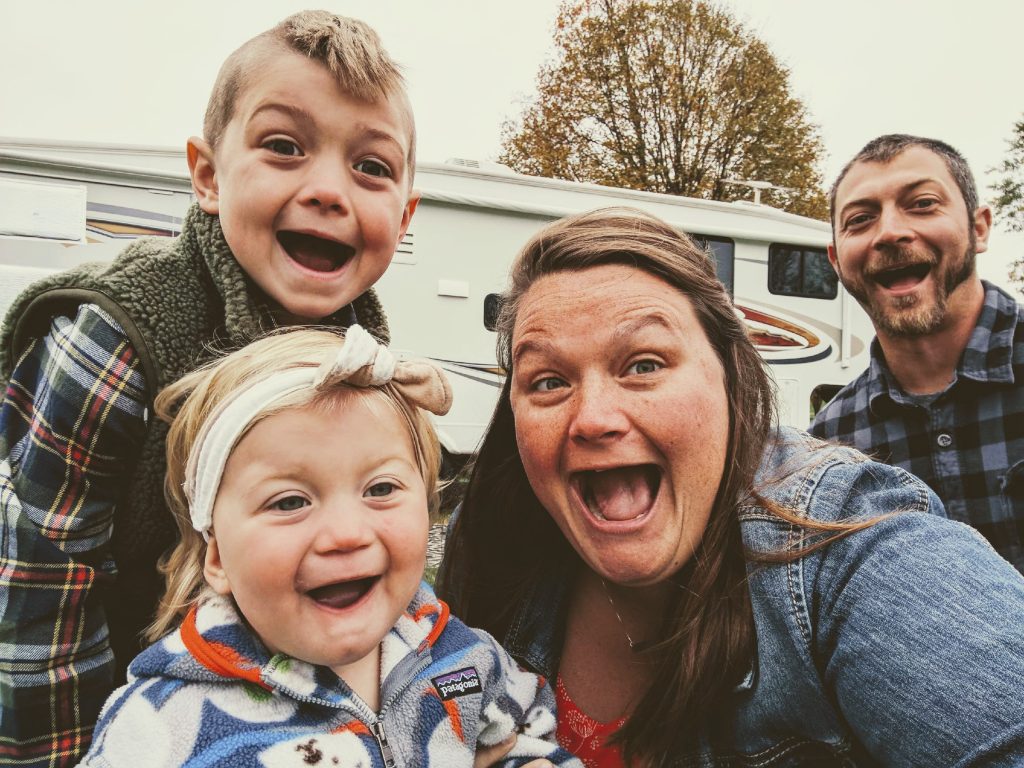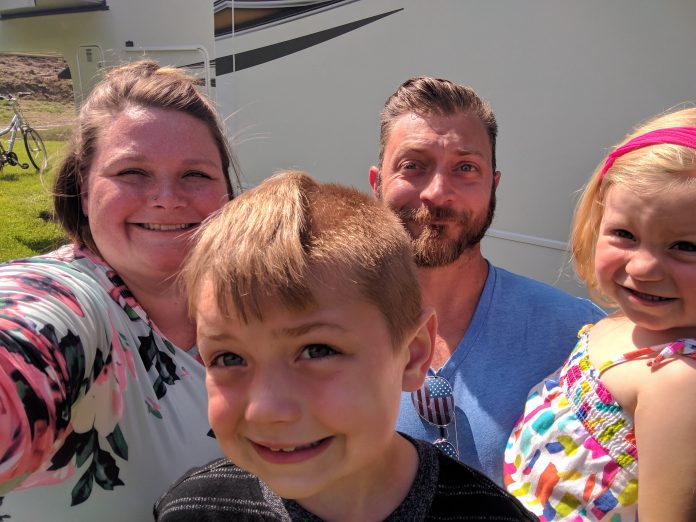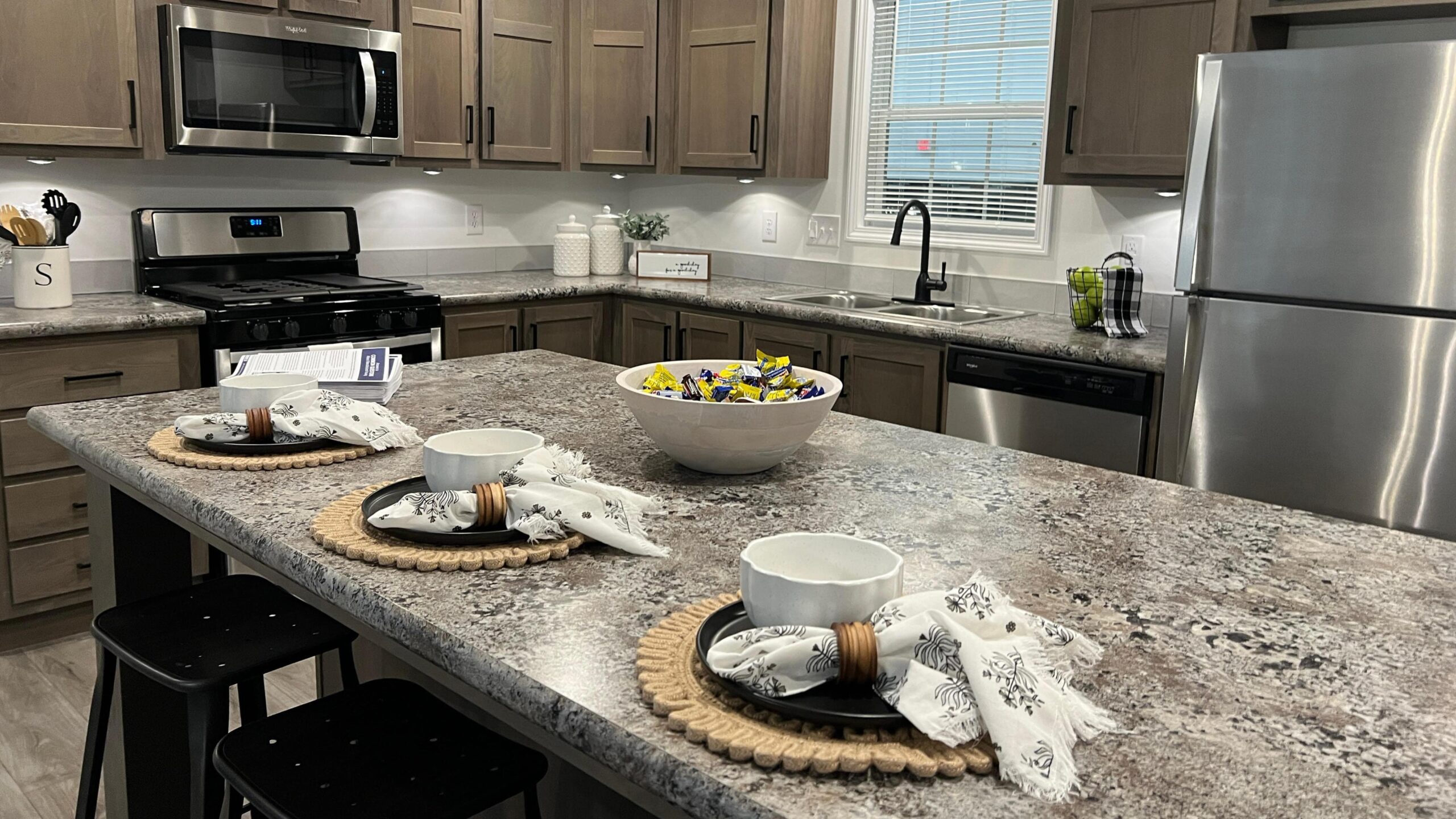By Brynn Burger
I sat surrounded by piles of clean laundry, nursing our newborn daughter while trying to maintain some semblance of sanity with our then 4-year-old son. I had cleaned up the same messes no less than twice that morning. The mound of dishes threatened to create an avalanche that would just spill over onto the stacks of mail covering our countertops that nearly qualified us for an episode of Hoarders.
That scene was the backdrop to my epiphany.
When Dreams Turn to Nightmares
Four years prior, my husband and I had bought a 2,200-square-foot farm house on 15 acres with a pond. It was our dream, but it began to feel like a nightmare.
As I tearfully watched episode after episode of tiny home shows, I began to wonder how a spit-up covered mom on maternity leave from her thankless teaching career and her husband who had been working years at a dead-end job just to make ends meet would ever make this dream a reality. We were working 50-, 60-, 70-hour weeks and then coming home to a house that needed to be cleaned, a yard that needed to be mowed, and things that needed to be fixed.
Our family had built a life that required us to work so hard we were too tired to enjoy it. We were overworked, overtired, overstressed, underpaid, under-appreciated, and under-joyed. It didn’t make any sense that we had chosen this for ourselves.
Tiny Living, Big Solution
I spent over a year researching tiny living, while simultaneously inundating myself with all of the research supporting the benefits that simplifying life had on children with behavioral and anxiety diagnoses.
Just before this life-changing – sponsored by HGTV – lightbulb moment, our son had received his first behavioral diagnosis; one that would be followed by four more over the course of the next two years. Though we’d spent a collective 30-plus years serving at-risk youth and kids with disabilities, meeting our own child’s needs was brand new territory.
Tiny living seemed to be a potential solution to several of the challenges we were facing as a family. Simplifying our space and our way of life would allow us to reduce the stimulation for our son, thus reducing his anxiety and increasing his brain’s ability to think slowly through situations. Downsizing would reduce our debt, decrease our environmental footprint, and allow us to afford to be a one-income household.
It seemed simple, but nothing ever is with our family; our tiny journey is no different.
Prepping for The Tiny Living Purge
We listed the home we loved but couldn’t keep up with and began selling or giving away everything that wasn’t a must-have item. We learned valuable lessons by allowing our kids to choose their own toys to make the cut.
I must have spent 30 minutes trying to convince our son that he loved a vintage Fisher Price toy telephone because my dead grandma had given it to him. The truth was that he never even played with it. He taught me that the memories I have aren’t in the “stuff.” Freeing ourselves of the clutter and the extra tangible items allowed us to be released from the anxiety of an overcrowded space and be intentional about our time together.
They each have only two square fabric bins to hold toys, and if it doesn’t fit, it doesn’t stay! That became our motto, along with new in, old out, and 50 clothing items per family member per season.
Of course, our house was in a bidding war amongst three families the very first day we listed it, so we ended up with two weeks to find a tiny home, a place to park it, to move out of our dream farm house, and to trek two states away for a job I’d accepted teaching English to formerly incarcerated high school students.
The Tiny Living Learning Curve
With only two weeks to purge, pack and hit the road running, we agreed on a 2011 Jayco Eagle 36 foot fifth wheel camper to ensure we didn’t take on more debt, since financial freedom was a big motivator for our downsizing to tiny life. The elderly couple who previously owned Telle (pronounced Tell-ee), as we call her, was kind enough to leave the plastic on the carpet for us.
She was in excellent shape, but looked like someone’s sweet grandmother decorated her. Plus, we were a free-spirited and fun family embarking on a lifetime of adventure, so we had to give her an overhaul! We remodeled everything on the inside to suit our family’s need for full-time living and road-schooling our kids, including a sensory and calming area for our boy.
Doable Downsizing for Tiny Living with Kids
We are often asked how in the world we remain happily married in 300 square feet with two kids and a dog. Honestly, it is easy! We test-drove rental tiny houses for four long weekends before taking the plunge. That allowed us to prioritize what worked and didn’t work for our family.
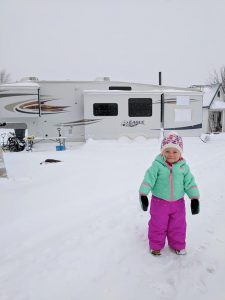
We planned our bedrooms on opposite ends of the rig, both with real doors that close and lock. While I adore the sliding farmhouse style, they didn’t block out light or sound and remaining happily married requires prioritizing privacy. So now our bedrooms are actually farther apart than they were in the upstairs of the old farm house.
My husband tore out the dining table and the oversized hide-a-bed couch and replaced them with a slim line sitting area with storage underneath, as well as a beautiful window-height bar that folds into a square dining room table in the evenings. It provides a workspace for me as well as dining for the family.
We have the floor plans and designs with a great tiny house company in North Carolina, and we can’t wait to build our forever tiny. But we’ve learned to save and wait before buying into a dream that we can’t yet afford.
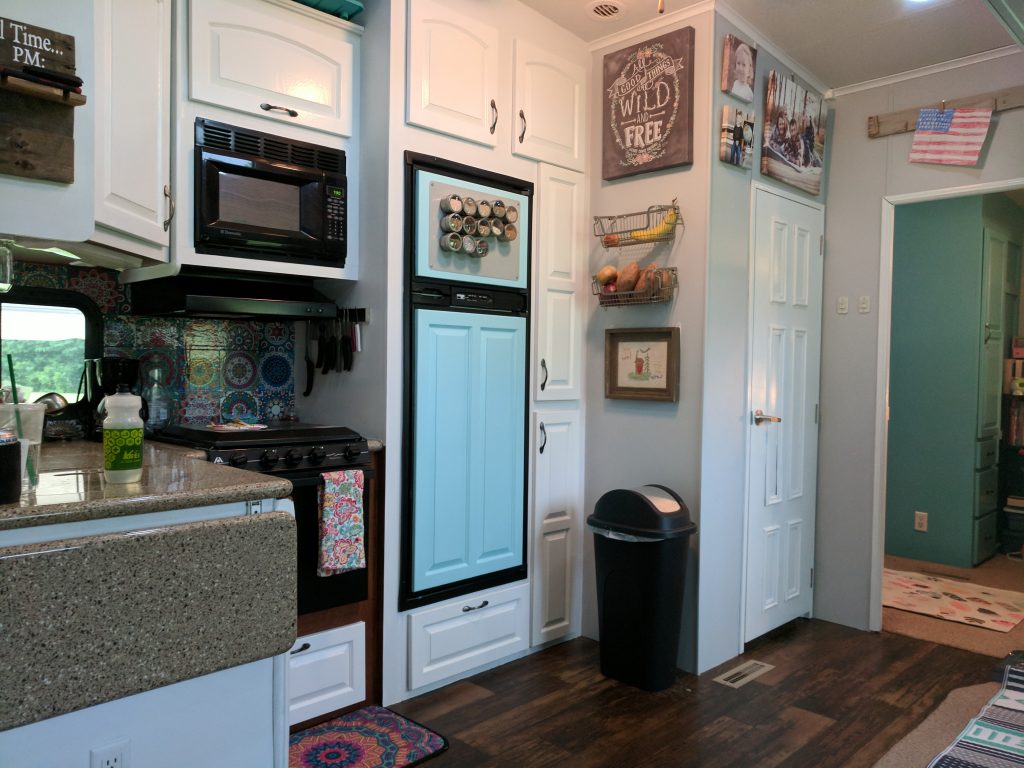
Simple Living is Life-Changing
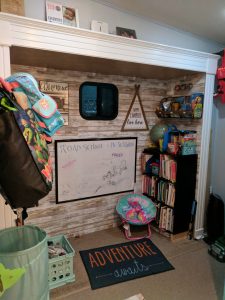 This switch to simplicity allowed one of us stay home and road-school our kids so they could learn on their terms. As a licensed teacher, I was able to write state-aligned curriculum that was geared toward hands-on learning and promoted relevant lessons that focused on our son’s strengths while giving him the time and opportunity to improve areas of weakness. No longer were we being forced to hear all of the things about our son that didn’t fit the mold of sitting quietly for hours without recess.
This switch to simplicity allowed one of us stay home and road-school our kids so they could learn on their terms. As a licensed teacher, I was able to write state-aligned curriculum that was geared toward hands-on learning and promoted relevant lessons that focused on our son’s strengths while giving him the time and opportunity to improve areas of weakness. No longer were we being forced to hear all of the things about our son that didn’t fit the mold of sitting quietly for hours without recess.
What we know for sure is that we want to lead by example. We don’t want our kids to grow up afraid to take risks or unwilling to trust that God is faithful. We want our kids to run outside, get dirty, meet friends on the playground, serve others, dig for crawdads in creeks, and learn about rocks from climbing and exploring them … not just watching PowerPoints in a row of sterile desks surrounded by prison-colored cement walls and the looming threat of standardized testing.
Marriage is hard. Raising kids is hard. Parenting children with special needs is really hard. We do the best we can to teach our kids to be kind, and tiny living allows them to experience other cultures, religions, socioeconomic areas, and people of all kinds. My husband and I believe that this choice is truly best for our little family in our tiny corner of the world, and we are loving every minute of intentional living.
If you are ready to purge and start working toward tiny living, check out my eCourse “Timeline to Tiny” at https://themamaontherocks.teachable.com for practical steps to downsizing your house and upgrading your life!
